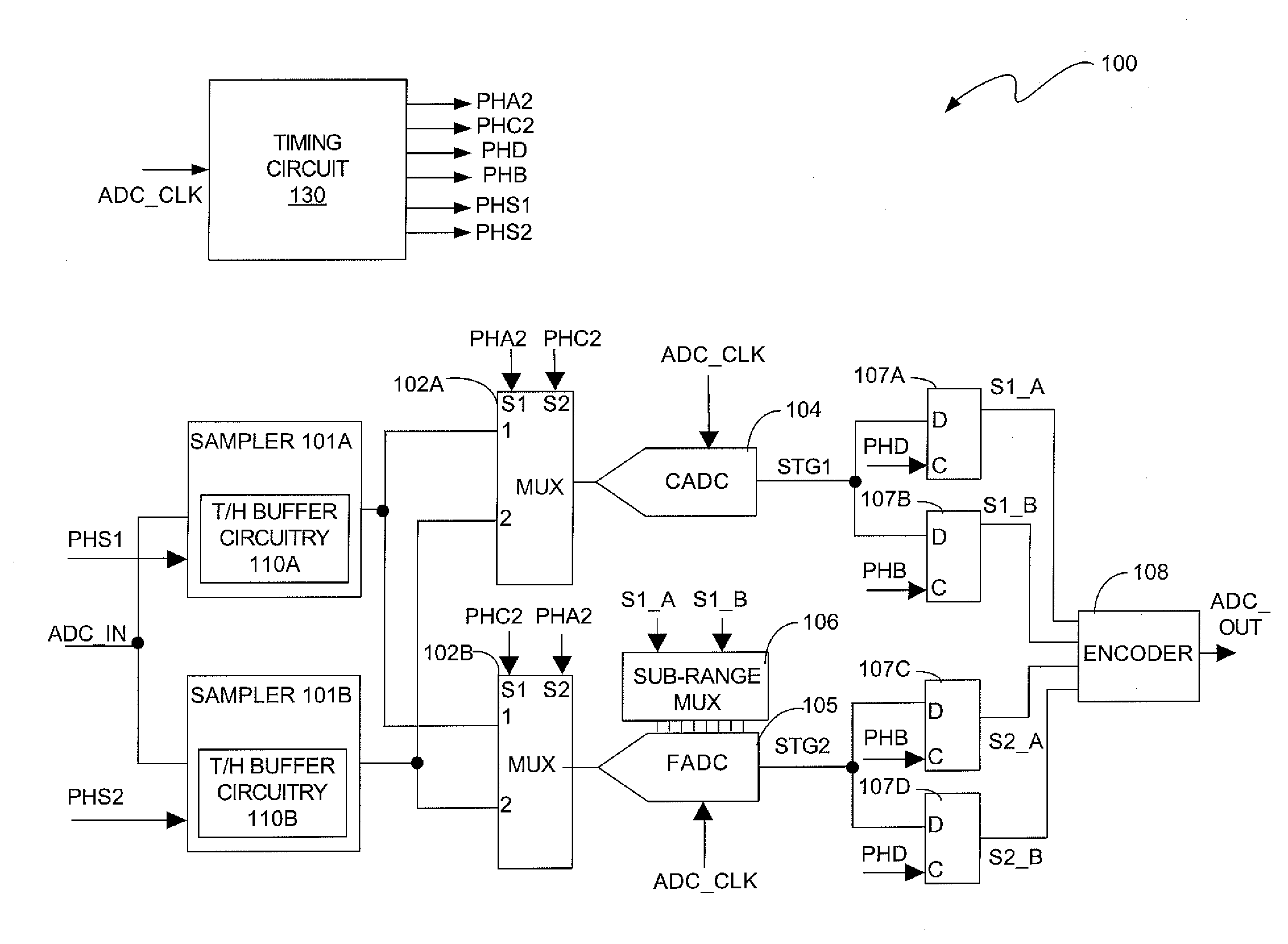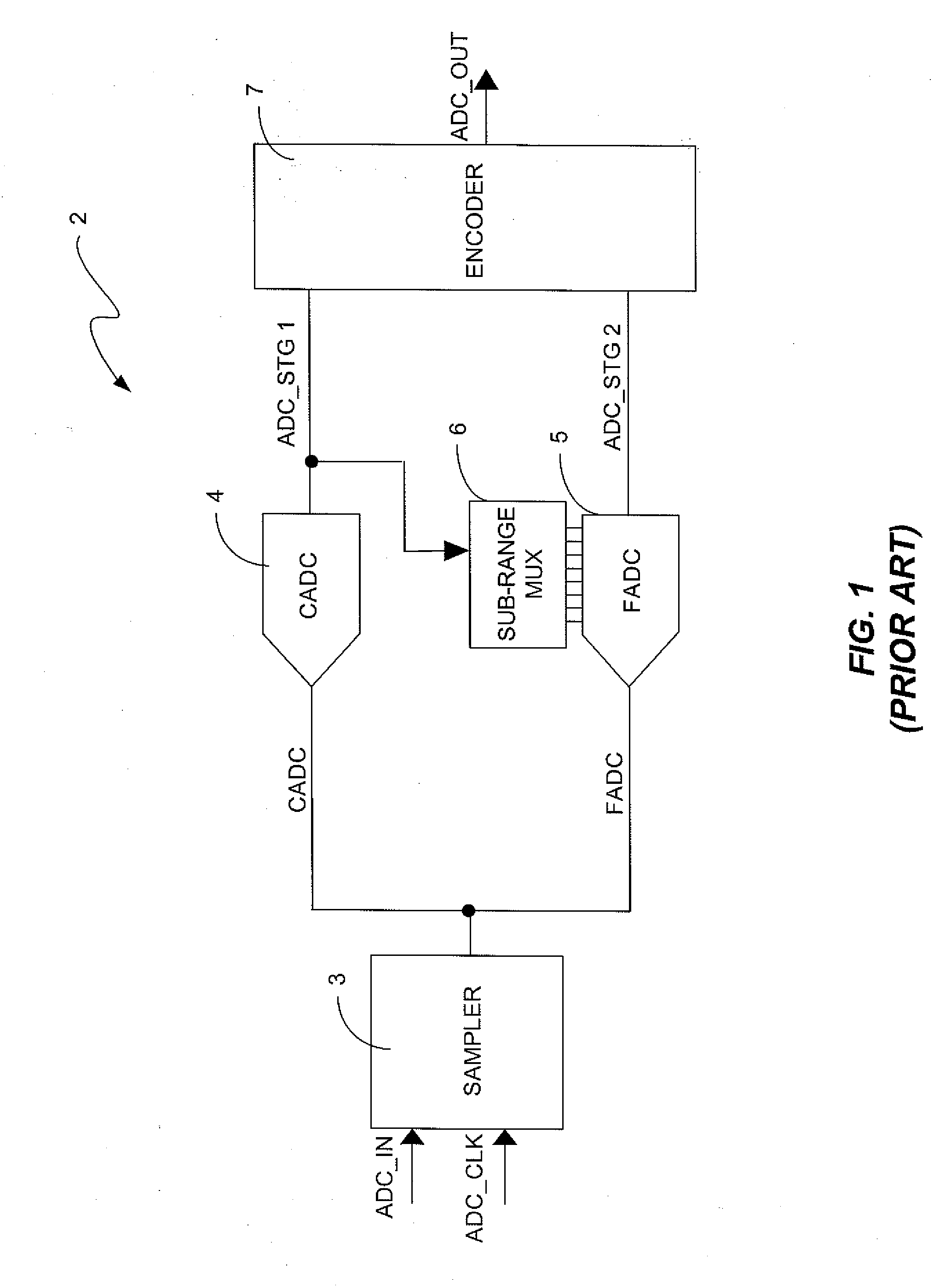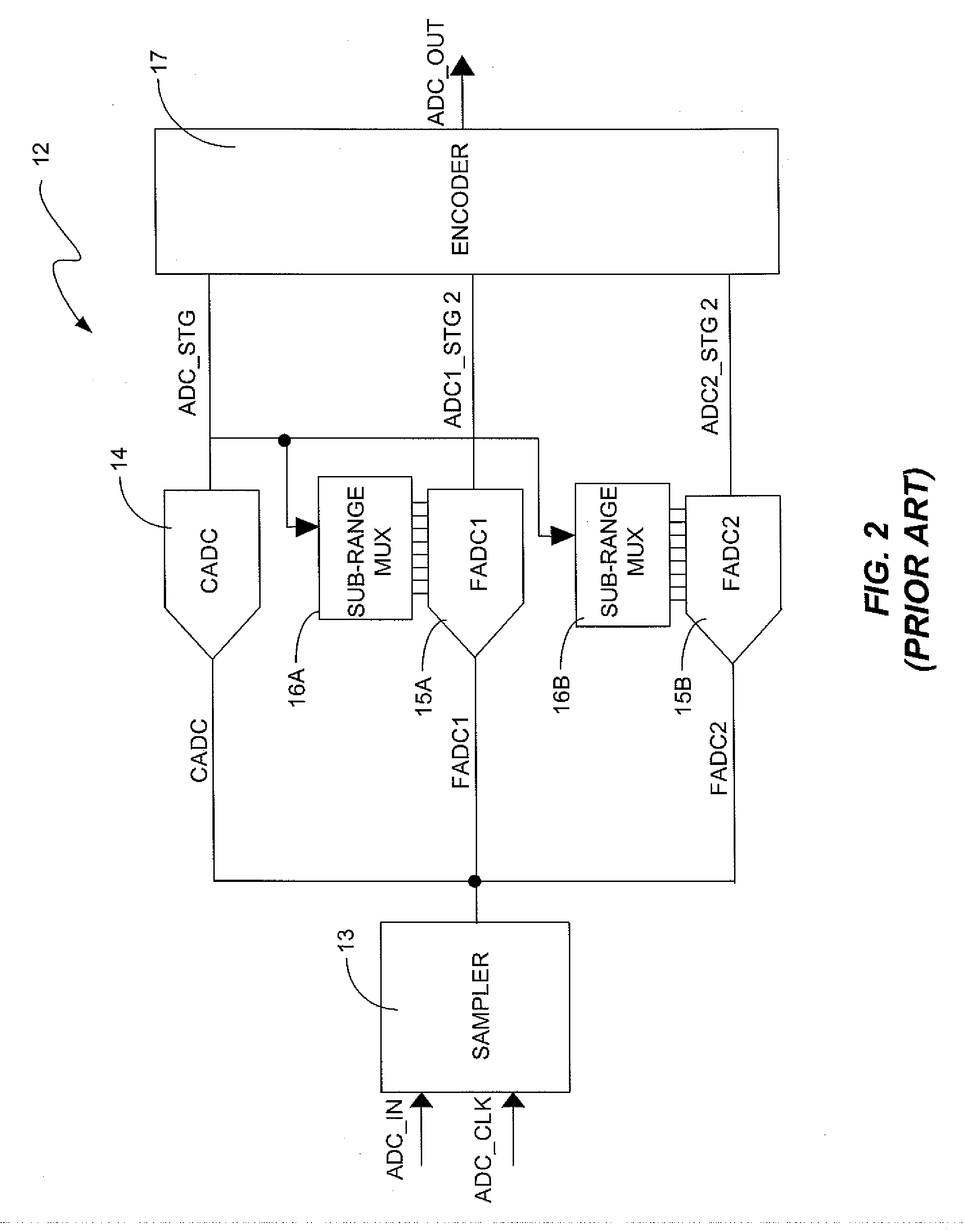Two-step sub-ranging analog-to-digital converter and method for performing two-step sub-ranging in an analog-to-digital converter
a technology of analog-to-digital converter and two-step sub-ranging, which is applied in the field of two-step sub-ranging adc, can solve the problems of large area, large amount of power consumed by flash adc, and the need for comparators to be extremely fast, so as to increase the overall timing margin window without increasing power consumption and without increasing the amount of die area required
- Summary
- Abstract
- Description
- Claims
- Application Information
AI Technical Summary
Benefits of technology
Problems solved by technology
Method used
Image
Examples
Embodiment Construction
[0022]In accordance with the invention, a two-step sub-ranging ADC is provided that achieves significant improvements in the settling time window available for the CADC, MUX sub-ranging and FADC conversion processes without increasing the amount of chip area or power that are consumed by the ADC. The ADC uses interleaved sampler / buffer circuits to sample the incoming analog signal on different phases of the clock signal. MUXes provide the samples obtained by the sampler / buffer circuits to the CADC and FADC circuits in ping pong fashion in such a way that the CADC and FADC circuits are converting during every clock period. In addition, these improvements are achieved without increasing the number of potential sources of bit decision mismatches in the two-step ADC.
[0023]The two-step sub-ranging ADC is typically integrated into an integrated circuit (IC). The IC that incorporates the ADC typically also contains other types of circuits for performing other types of functions. The invent...
PUM
 Login to View More
Login to View More Abstract
Description
Claims
Application Information
 Login to View More
Login to View More - R&D
- Intellectual Property
- Life Sciences
- Materials
- Tech Scout
- Unparalleled Data Quality
- Higher Quality Content
- 60% Fewer Hallucinations
Browse by: Latest US Patents, China's latest patents, Technical Efficacy Thesaurus, Application Domain, Technology Topic, Popular Technical Reports.
© 2025 PatSnap. All rights reserved.Legal|Privacy policy|Modern Slavery Act Transparency Statement|Sitemap|About US| Contact US: help@patsnap.com



